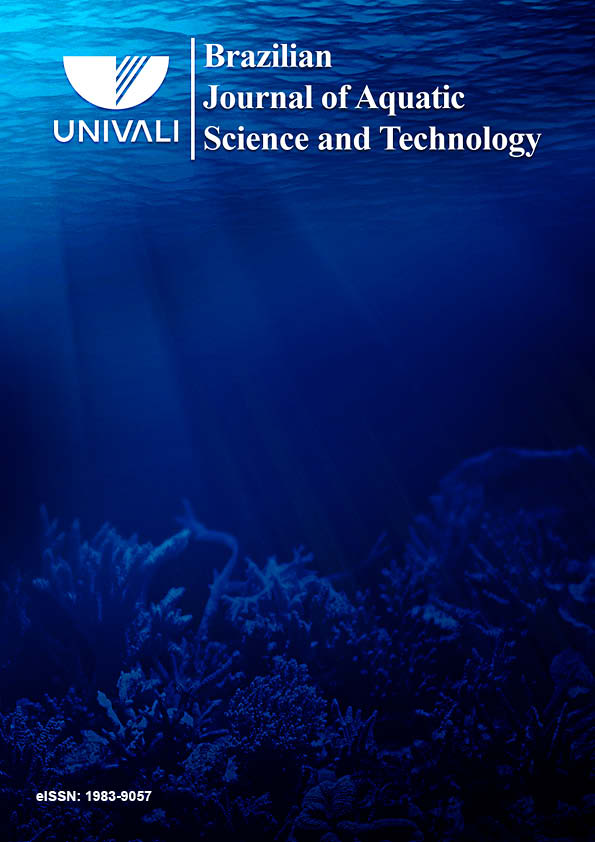Experimental use of water hyacinth (Eichhornia crassipes) wetland for treating flowing waters in an urban park in Brazil
DOI:
https://doi.org/10.14210/bjast.v20n2.7259Resumen
This study tested water treatment wetlands in an urban park located in São Paulo, Brazil. Eichhornia crassipes (water hyacinth) was introduced into two creeks inside the park, to assess the efficacy of wetlands in treating flowing waters. The plant adaptation to local conditions was very good. Higher removals were obtained in Total Suspended Solids, Turbidity and Color (maximum removal > 70%); TKN, Total Phosphorus and Fecal Coliforms had satisfactory removals (maximum removal > 50%). BOD presented low removals and Dissolved Oxygen was consumed, indicating that aerobic processes occurred. Despite the experiment’s difficulties and results’ variance, the study shows that water hyacinth has potential to treat flowing water, especially when there’s an urgent need for meeting sanitary and aesthetical standards in urban parks.
Descargas
Publicado
Número
Sección
Licencia
Autores que publicam nesta revista concordam com os seguintes termos:
- Os Autores mantém os direitos autorais e concedem à revista o direito de primeira publicação, com o trabalho simultaneamente licenciado sob a Creative Commons Attribution License que permitindo o compartilhamento do trabalho com reconhecimento da autoria do trabalho e publicação inicial nesta revista.
- Autores têm autorização para assumir contratos adicionais separadamente, para distribuição não-exclusiva da versão do trabalho publicada nesta revista (ex.: publicar em repositório institucional ou como capítulo de livro), com reconhecimento de autoria e publicação inicial nesta revista.
- Autores têm permissão e são estimulados a publicar e distribuir seu trabalho online (ex.: em repositórios institucionais ou na sua página pessoal) a qualquer ponto antes ou durante o processo editorial, já que isso pode gerar alterações produtivas, bem como aumentar o impacto e a citação do trabalho publicado.

